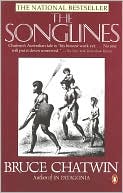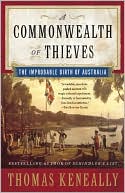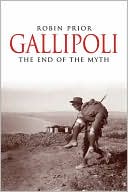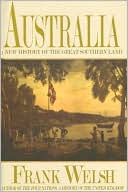The Floating Brothel: The Extraordinary True Story Of An Eighteenth-Century Ship And Its Cargo Of Female Convicts
Now in paperback, the incredible true story of a shipload of "disorderly girls" and the men who transported them, fell for them, and sold them.\ This riveting work of rediscovered history tells for the first time the plight of the female convicts aboard the Lady Julian, which set sail from England in 1789 and arrived in Australia's Sydney Cove a year later. The women, most of them petty criminals, were destined for New South Wales to provide its hordes of lonely men with both sexual favors...
Search in google:
In July 1789, two hundred and thirty-seven women convicts left England for Sydney Cove in Australia's New South Wales on board a ship called the Lady Julian. Historian Sian Rees delved into court documents, letters, and journals to extract firsthand accounts of the women's experiences on board a ship that both held them prisoner and offered them refuge from their oppressive existence in London. Forced by the economy of the times to beg, steal, and sell themselves, the women of the Lady Julian defined resourcefulness, and set up profitable businesses in their various ports of call. This is the rollicking and exhaustively researched story of that extraordinary group of women and their voyage halfway around the world. Daily Mail This wonderfully vivid book, beautifully written . . . will stay in my mind for many months.
Forewordxv1.Disorderly Girls12.Fair British Nymphs193.Gaol Fever354.Galleons Reach455.Life in the River556.Capital Convicts Condemned667.Leaving London808.Becoming in Turns Outrageous939.Santa Cruz de Tenerife10510.Crossing the Line12411.The Birth of John Nicol Junior14112.The Wreck of the Guardian15713.Cape Town to Sydney Cove16914.A Cargo So Unnecessary18415.Love Pilgrimages202Principal Characters215Select Bibliography219Index225Map: The Voyage of the Lady Julian, July 1789-June 1790238
\ From Barnes & NobleThe Barnes & Noble Review\ History comes alive in this narrative about women convicted of petty crimes in 18th-century England, then transported to New South Wales, Australia, as companions to the lonely men serving time in the "land beyond the seas." This recovered history, based on the recently discovered journals of one of the officers aboard the transport ship Lady Julian, gives us a remarkable portrait of British colonialism from a most relevant perspective -- that of the women who made the harrowing, yearlong journey: their petty crimes, their hopes, their dreams, and the lives they went on to make for themselves in this other New World. \ The book has a highly cinematic quality to it: Sian Rees, no stranger to the world of ships, draws on her expertise and has filled the book with sights, smells, sounds, and images that convey what the voyage out was actually like. The Floating Brothel is a history, and a wonderful series of recaptured stories -- of love, adventure, danger, illness, death, and triumph -- that sheds light on the founding families of English Australia.\ At the book's core is a love story: between ship's steward, John Nicol, and one of the convicts, Sarah Whitelaw. Along the way we are given vivid accounts of the 18th-century English penal system, the problems of a society in the throes of the Industrial Revolution, and detailed accounts of life aboard ship for this very special human cargo. Wonderfully written, interesting, and always lively, The Floating Brothel has all the ingredients for a great read and (hint, hint) a compelling film. (Elena Simon)\ Elena Simon lives in New York City.\ \ \ \ \ \ Philadelphia InquirerThe great strength of the book is its sure grasp of English jails and English ships.\ \ \ New York Times Book Review[Rees'] robust, clear prose carries the story.\ \ \ \ \ ContentsBrought back to life a vibrant, bawdy high seas adventure.\ \ \ \ \ GuardianSiân Rees wears her considerable learning lightly, and there is not a dull moment in what is . . . wonderfully earthy read.\ \ \ \ \ Daily MailThis wonderfully vivid book, beautifully written . . . will stay in my mind for many months.\ \ \ \ \ Publishers WeeklyIn July 1789, the Lady Julian set sail from England, bound for the penal colony at Sydney Bay, New South Wales, and bearing some 240 women sentenced, mostly for petty crimes, to "transportation to parts beyond the seas." The intention of this voyage was twofold: to relieve overcrowding in British jails and t0 provide sexual comfort and eventually children to the male prisoners, from whom nothing had been heard in more than a year. One year later, the ship arrived, its cargo augmented by a number of infants born along the route to the "wives" of her officers and crew. But when it finally dropped anchor, the Lady Julian proved something of a disappointment to the half-starved colonists, who had been hoping more for food than for recreation. The colony was eventually resupplied with food, and these women, salvaged from jails and saved from the gallows, survived and occasionally prospered. Rees descends from a Cornish shipbuilding family and, in her first book, marvelously evokes the sounds and sights of a ship under sail. She is just as good ashore, where her meticulous scholarship vividly re-creates the social conditions of late-18th-century England that produced both the criminal activities of her subjects and the terms of their punishment. Despite the title, relatively little space is given to sexual hi-jinks on the high seas. Instead, Rees uses every scrap of information she can muster to produce a lively, vibrant sense of these women as they must have lived their lives. 17 illus. (Mar.) Forecast: This outstanding debut sheds light on a fascinating, dark corner of history and will appeal to readers of women's studies; good reviews should also help it reach a wider audience. Copyright 2001 Cahners Business Information.\ \ \ \ \ Publishers WeeklyIn July 1789, the Lady Julian set sail from England, bound for the penal colony at Sydney Bay, New South Wales, and bearing some 240 women sentenced, mostly for petty crimes, to "transportation to parts beyond the seas." The intention of this voyage was twofold: to relieve overcrowding in British jails and t0 provide sexual comfort and eventually children to the male prisoners, from whom nothing had been heard in more than a year. One year later, the ship arrived, its cargo augmented by a number of infants born along the route to the "wives" of her officers and crew. But when it finally dropped anchor, the Lady Julian proved something of a disappointment to the half-starved colonists, who had been hoping more for food than for recreation. The colony was eventually resupplied with food, and these women, salvaged from jails and saved from the gallows, survived and occasionally prospered. Rees descends from a Cornish shipbuilding family and, in her first book, marvelously evokes the sounds and sights of a ship under sail. She is just as good ashore, where her meticulous scholarship vividly re-creates the social conditions of late-18th-century England that produced both the criminal activities of her subjects and the terms of their punishment. Despite the title, relatively little space is given to sexual hi-jinks on the high seas. Instead, Rees uses every scrap of information she can muster to produce a lively, vibrant sense of these women as they must have lived their lives. 17 illus. (Mar.) Forecast: This outstanding debut sheds light on a fascinating, dark corner of history and will appeal to readers of women's studies; good reviews should also help it reach a wider audience. Copyright 2001 Cahners Business Information.\ \ \ \ \ Library JournalA Cornish Oxford graduate from a boat designer/builder family, Rees grants us a witty, learned, fun read. This work of nautical history recounts the 1789-90 voyage from England to Australia of a ship full of female convicts. The book covers the women's crimes, trials, and appalling jails back home, which for many put a more favorable cast on the prison ship and the near-starving colony receiving them in Sydney Cove. Using primary sources (including court, colonial, and ships records; the ship's cooper's memoirs; and other convict transport accounts), Rees weaves her spell. Following custom, officers and sailors took shipboard "wives," leading to enforced separations of lovers and of parents and infants. Given the alternatives, these unions were apparently not coerced. In exchange, the select gained comforts, privileges, and protection from convict gangs. The Lady Julian was the first Second Fleet vessel to reach the despairing, fledgling colony. Rees fills gaps with judicious speculation and corrects modern assumptions by providing historical context. Aimed at a wide audience, this history is highly recommended for public and academic libraries. Nigel Tappin, Huntsville, Ont. Copyright 2001 Cahners Business Information.\ \ \ \ \ Kirkus ReviewsRees debuts with a cracking tale drawn from an unedifying episode in her native England's history: the "Transportation to Parts Beyond the Seas" of hundreds of British women, shipped on the Lady Julian in 1789 to penal life in Australia. The author expertly paints a portrait of London in the late 1780s, a grim time when thousands of soldiers returning from the war in the American colonies displaced women from employment. Having no place to go, many became "disorderly girls": prostitutes, shoplifters, pickpockets, thieves, muggers, and forgers. Of the many caught and sentenced, a good number were burned at the stake, the rest tossed into jail. But the jails became overcrowded, and authorities decided the solution was "transportation," the new fad of shipping convicts off to Australia. Rees follows the more than 200 women who were sent to Sydney Cove aboard the Lady Julian as closely as records allow, from the street to jail to the Old Bailey to ship to colony. Readers will be transported by the author's prose, a lively and atmospheric brew of great immediacy detailing the circumstances of poor women in London, conditions in jail, typical punishments for typical crimes, the intricate web of associations among prisoners, sponsors, and the criminal justice system. Thanks to the records kept by the captain of the Lady Julian, Rees is able to re-create conditions on board, which were far from pleasant, of course-the women were prostituted to sailors right and left-but nothing compared to those on other convict ships, which regularly landed in Australia with most of their human cargo near death. Once at Sydney Cove, Rees loses sight of all but a few women who either managed to marry well or wereconsigned to the "whore's ghetto" on desolate Norfolk Island. Historical writing of the first rank, graphic and of real presence.\ \








